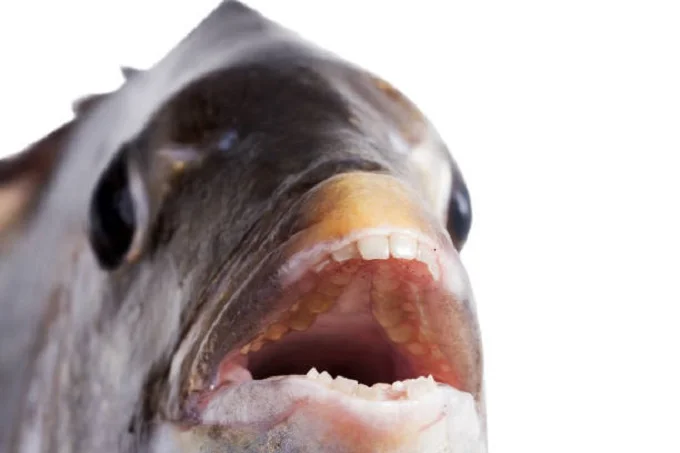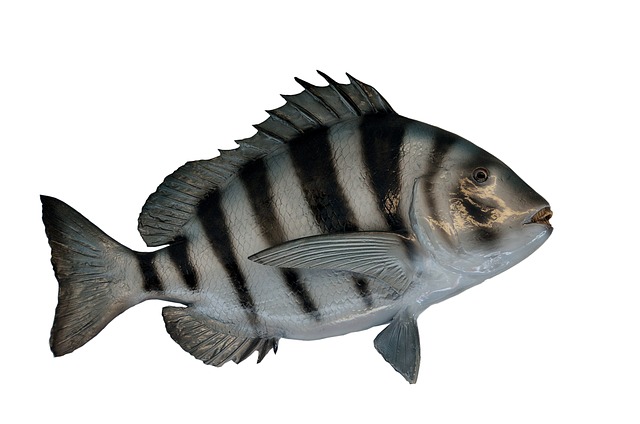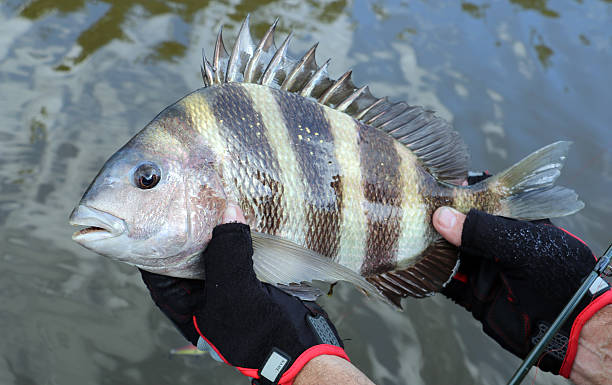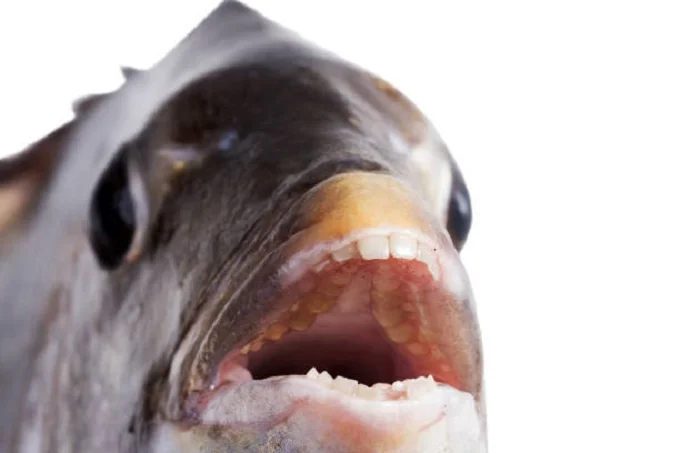Sheepshead facts: fish with human teeth

Sheepsheads are small marine fish with solid dorsal spines and slender bodies. Archosargus probatocephalus is a fish that typically grows to be 25-50 centimeters long but may reach 90 centimeters in certain situations! Its mouth is firm, and its teeth are short and human-like. Before we get into the strange tastes of this strange marine monster, let’s have a look at its looks, anatomy, and habitat.

If you look at the photo of a sheepshead, you could think this fish stole a set of teeth from a sailor at the bottom of the sea! Its teeth resemble those of a human.
Sheepshead facts

This deep-bodied flatfish, which can weigh up to 9 kg and reach 91 cm in length, is widely found in the Americas. The phrase “sheepshead” may apply to a variety of animals, including a variety of fish. However, in this post, we’ll look at Archosargus probatocephalus, which is the most often used name.
This species isn’t very valuable commercially, but it’s famous for its remarkably human-like teeth! The rear of the sheep’s head is lifted behind the deep sloping profile of the head. The fish has a short nose and a lower mouth that is practically horizontal. It has strong dorsal spines and finely serrated scales. The body is normally green-yellow or grey in hue, with 5-7 vertical black stripes running through it. The pectoral and caudal fins are more greenish, whereas the pelvic and dorsal fins are black or grey.
The habitat of Archosargus probatocephalus(sheepshead)

Sheepsheads may be found in the Persian Gulf and along the US Atlantic coast. This fish may be seen from Cape Cod, Massachusetts, south to Florida (where the largest population is found), and from the Gulf of Mexico to Brazil.
Sheepsheads are euryhaline species, meaning they live in waters with salinities ranging from 0 to 35 PPT (Particles Per Thousand). When they’re not spawning, they stick close to the shore. They devour marine organisms that don’t have shells.
They like salty water, particularly when precipitation seeps into saltwater estuaries. Sheepsheads are sensitive to strong environmental swings due to their unique food habits. Fish depart contaminated water basins because of their limited resistance to contamination and low oxygen levels. Sheepshead Bay, for example, is named after this species, although the fish has long since fled the bay owing to rising pollution levels.
Sheepshead likes areas with some topographic relief as adults. In the Gulf of Mexico, they are often observed along oyster reefs, breakwaters, mudflats, wrecks, and piers. Although they are not true migratory fish, as water temperatures drop in late fall and winter, they migrate to coastal breeding sites. Pacu is another amazing example of a fish with human teeth.
Teeth of a sheepshead fish

The front teeth resemble incisors, while the rear molars are somewhat inward, as you can see. When the fry is just 4.5 mm long, sharp and thick teeth develop, and all incisors appear when the fish are around 15 mm long. The rear teeth mature into adult molars at the same time.
Two rows of molars are found in the lower jaw, whereas three rows are found in the upper jaw. The Sheepshead’s thick mouth helps him readily crush and grind the shelled animals that these fish love to consume. It’s a bit strange to see a set of “human teeth” in a fish, as thrilling as it is.
Nutritional value of fish
Sheepshead eat a wide variety of foods since they are omnivores. They can eat practically any organic stuff found at the bottom of the ocean. These unassuming fish eat small animals and plant matter. According to some research, they eat around 100 distinct species!
Sheepsheads may eat shellfish up to 40 cm long. Crabs, worms, fish, and other crustaceans are among their favorite foods as they get older. They, interestingly, eat seagrass and algae when they’re plentiful.
Fish diets vary according to location, weather, and food availability. Even though shells are the main meal and are eaten practically all year, Archosargus probatocephalus likes to eat fish in the spring and plants and detritus in the hot and dry summers. They eat polychaete worms in the spring, autumn, and winter.
Sheepshead fish, according to several studies, play a crucial role in preserving marine biological equilibrium. They’re beneficial for keeping wildlife under check. Sheepsheads help to preserve the reservoir’s biodiversity by eating numerous species.
People’s importance

The Sheepshead is prized by chefs for its delicate white meat and mild taste, even though the fish’s thick scales and thorns make it difficult to peel and prepare. It may be purchased both fresh and frozen. Sheepshead may be grilled, baked, or microwaved. Although sheepshead meat has a limited yield, it has a strong and fragrant flavor.




